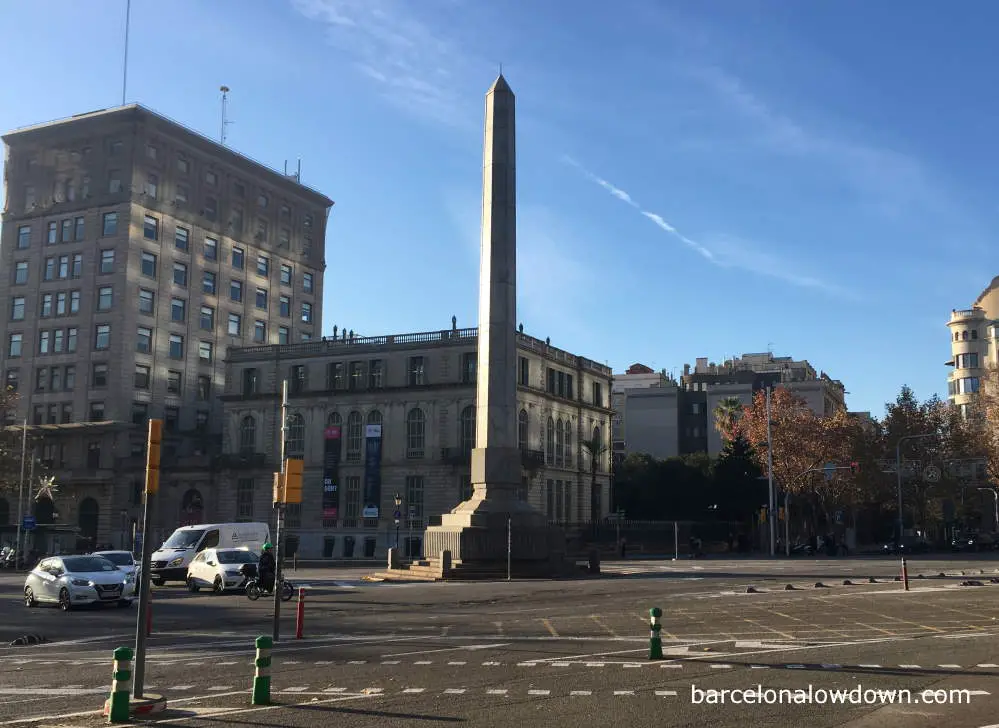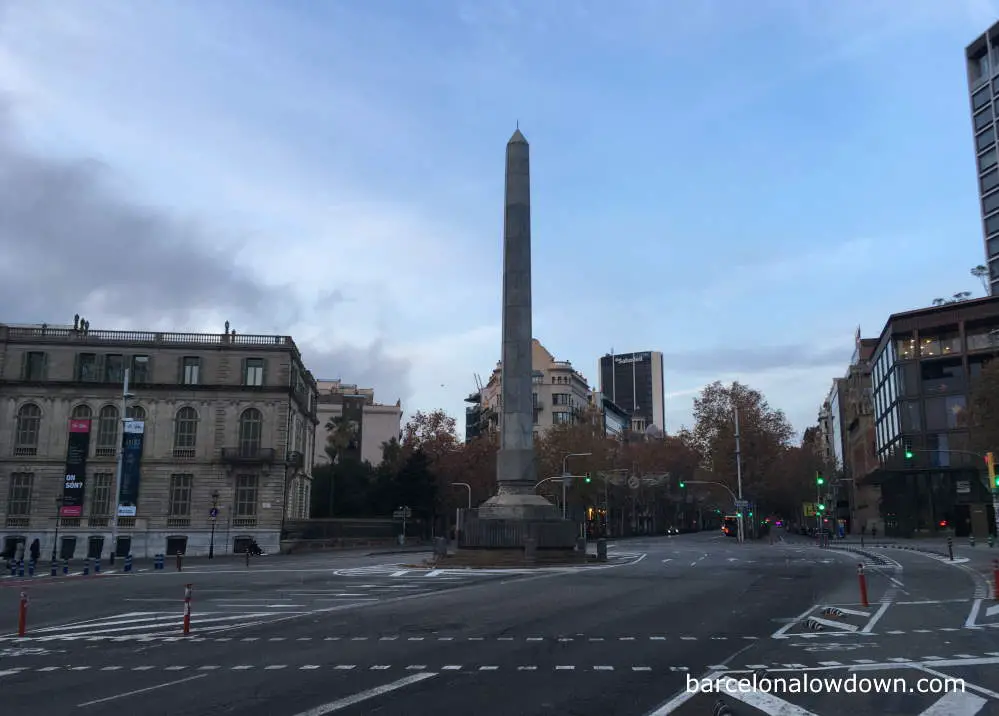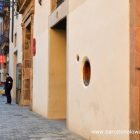If you keep walking along Passseig de Gràcia, past La Pedrera, towards the Vila de Gràcia, you’ll come to a large and rather chaotic intersection called Plaça Cinc d’Ors.
The plaza, which is really just an overgrown roundabout, takes its name from one of the cards in a pack of Spanish playing cards; the Cinc d’Ors, which is similar in appearance to any of the number five cards in a standard pack of playing cards (five of hearts, five of clubs etc.).
When the intersection was built, there were initially five roundabouts; one large roundabout in the middle, surrounded by four smaller roundabouts, visually similar to the aforementioned playing card.
Over the years, the number of vehicles using the roundabout has increased, the smaller roundabouts have been removed, and traffic is now controlled by traffic lights. In the centre of the intersection, on the only remaining roundabout, stands a twenty-metre granite obelisk, referred to colloquially as “El Llapis”, meaning pencil.

When the obelisk was built, it was topped by a bronze statue called La Republica, which was a female nude with one arm extended, holding up a bunch of laurel leaves.
Shortly after the monument was inaugurated in 1936, the Spanish Civil War broke out. After the war, which put an end to the Spanish Republic, the statue was removed and replaced by a large bronze eagle, plus another statue at the base of the obelisk named Victory by Frederic Marès. At the same time, the name of the plaza was changed to Plaza de la Victoria or Victory Square.
Apparently, the eagle didn’t last long and was removed after the allies won the Second World War. Presumably, Franco thought it was best to play down his relationship with Hitler by removing some of the more obvious Nazi symbols from public places.
In 1981, six years after Franco’s death and the restoration of democracy in Spain, the plaza was renamed to honour King Juan Carlos I. However, most people continued referring to it by the colloquial name Cinc d’Ors.
Surprisingly, the statue of Victory at the base of the monument remained in place right up until 2011, four years after the socialist government of the PSOE introduced a new law calling for the removal of all Francoist symbols from public places.
In 2016, after King Juan Carlos abdicated following a series of scandals, the name of the square was officially changed to Cinc d’Ors. [source]
If you’re wondering what happened to the statue La Republica, well, it was put into storage, where it remained until 2015. It can now be seen in Plaça de la Republica, which is yet another plaza that is basically just a large roundabout with a statue in the middle.

Location
The obelisk is located in Plaça Cinc d’Ors, at the intersection of Passeig de Gràcia and Av. Diagonal.
How to get there
The nearest metro stop is Diagonal on lines L3 and L5. Buses numbers 22 and 24 also stop nearby.
Other attractions nearby
- Palau Robert (museum)
- La Pedrera (Casa Milà)
- Casa Batlló
- Casa de les Puntxes
- La Sagrada Familia
Plaça Cinc d’Ors, Barcelona




